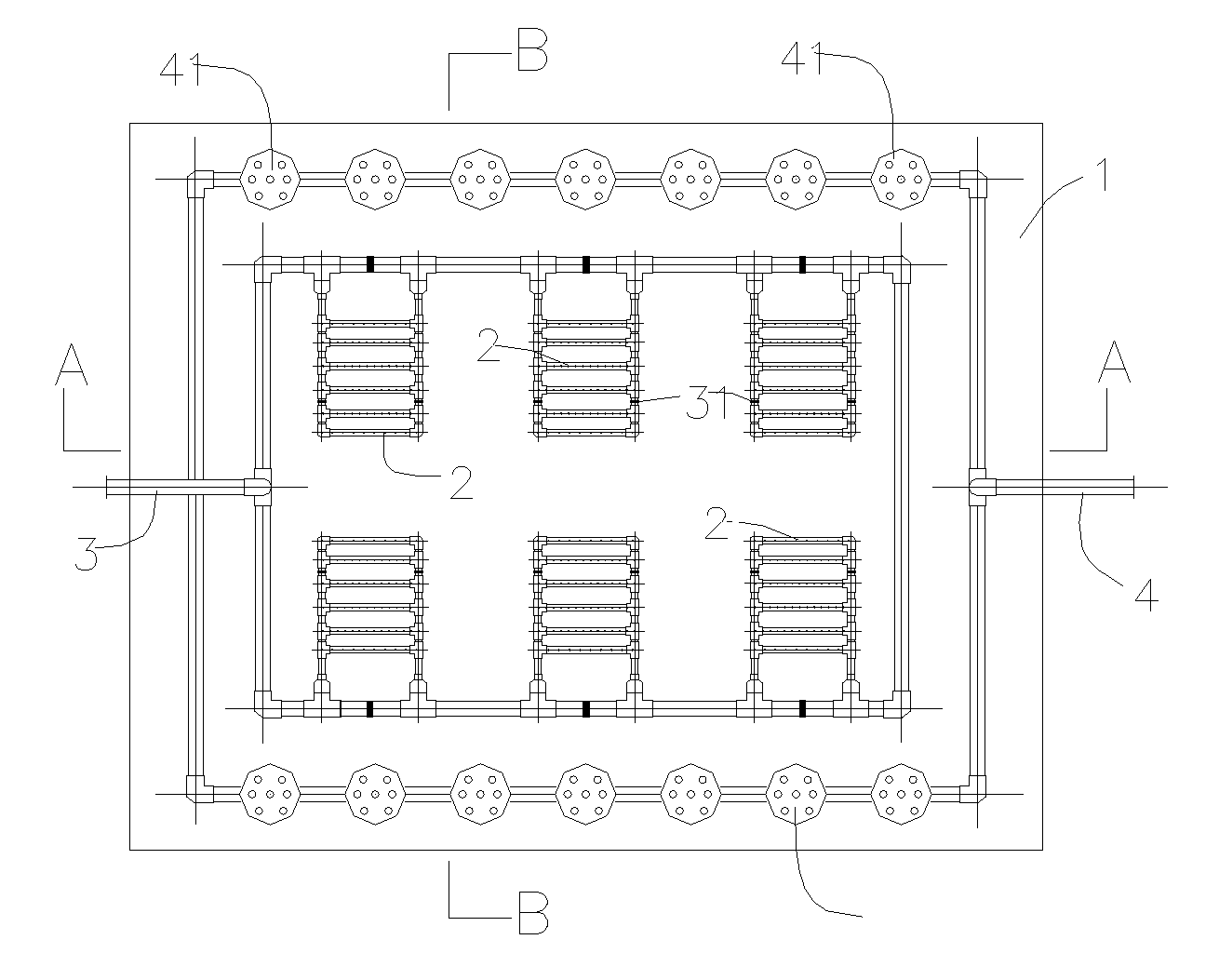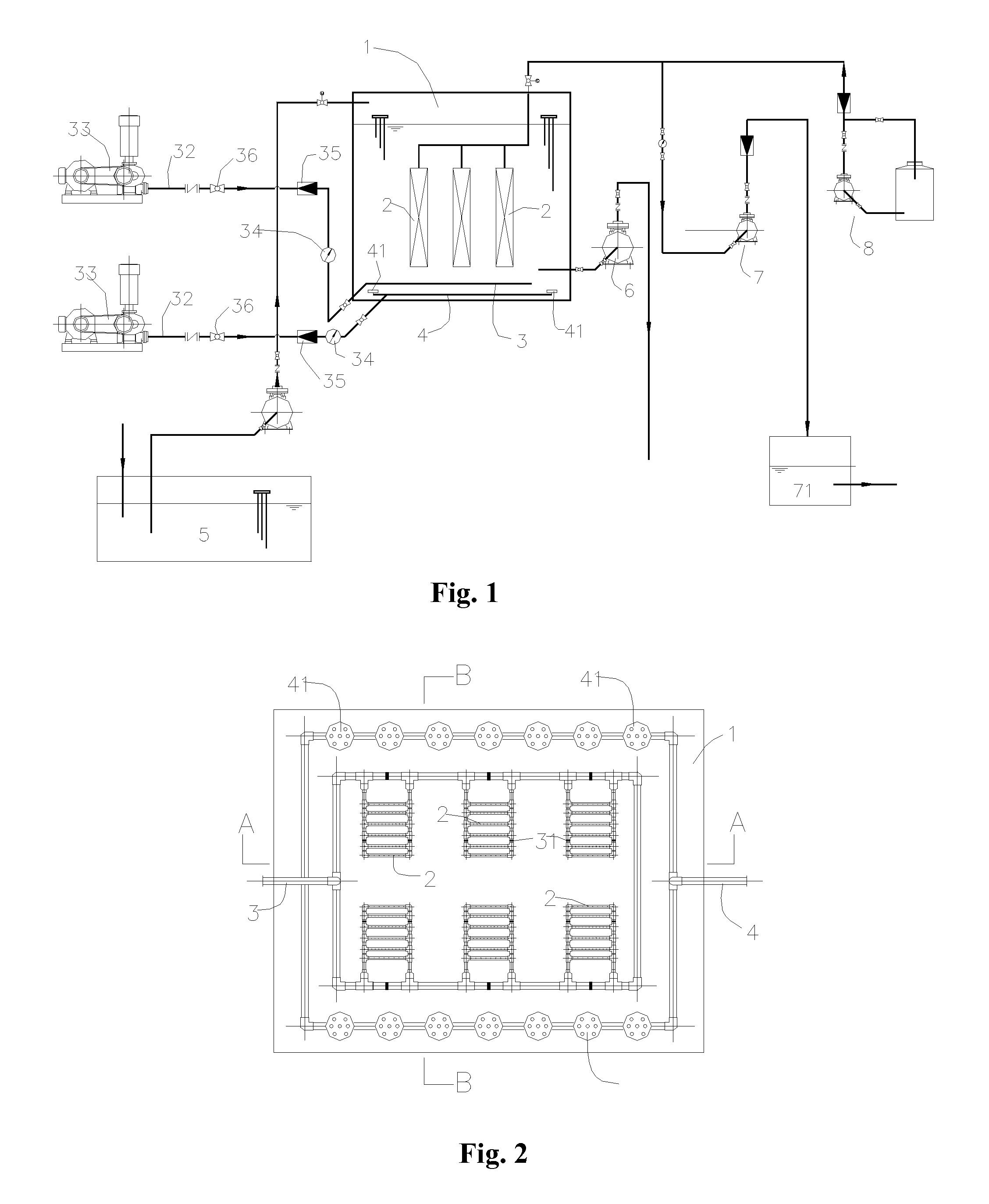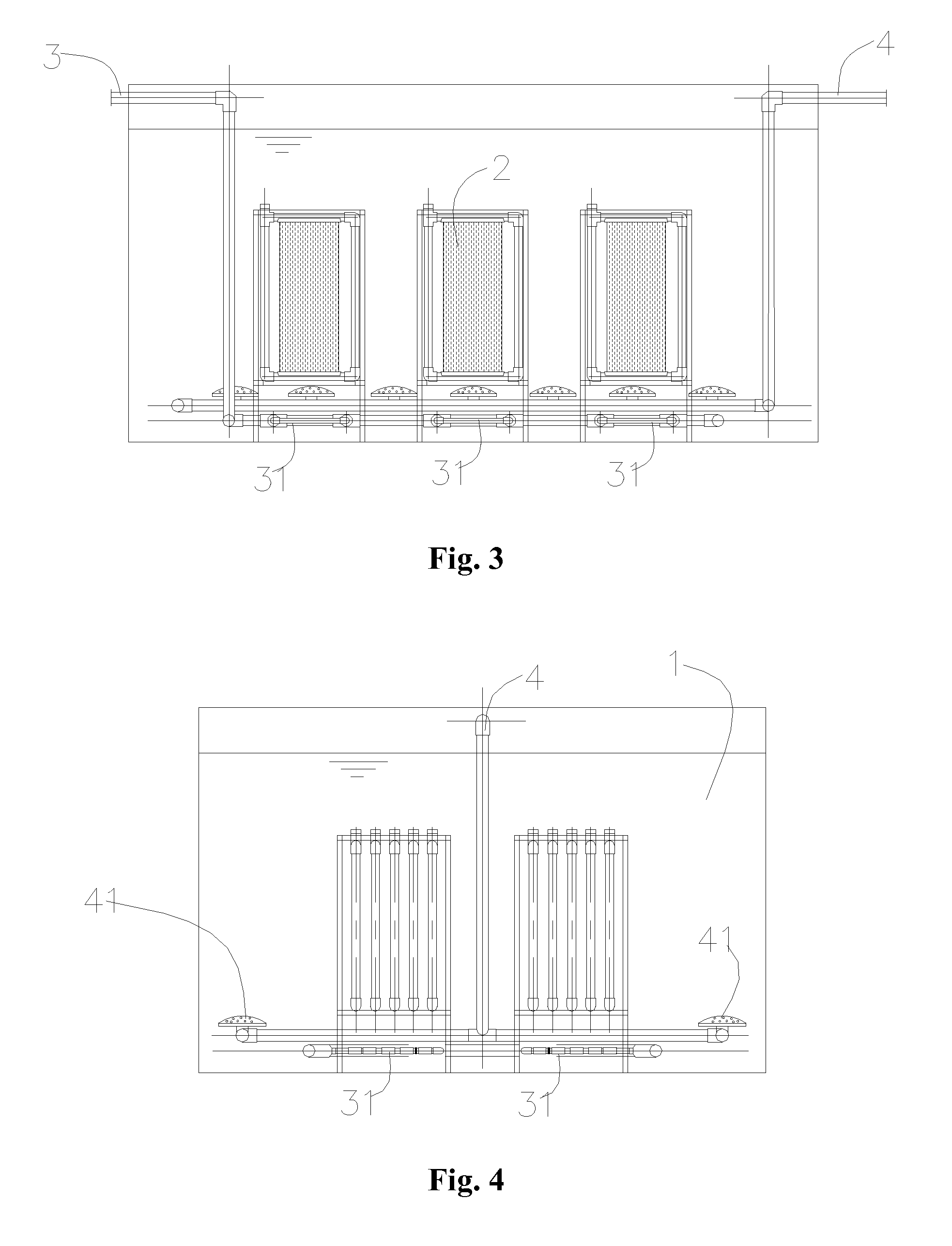Hybrid aeration membrane bioreactor
a bioreactor and membrane technology, applied in the field of membrane bioreactors, can solve the problems of increasing sludge concentration, low oxygen utilization rate (3-7%), high energy consumption for waste water treatment, etc., and achieves the effect of reducing or eliminating the sedimentation of pollutants and reducing the energy consumption
- Summary
- Abstract
- Description
- Claims
- Application Information
AI Technical Summary
Benefits of technology
Problems solved by technology
Method used
Image
Examples
Embodiment Construction
[0036] As shown in FIGS. 1-2, after removal of solid impurities, e.g., through a bar screen, highly loaded organic waste water, such as waste water from a hospital, is discharged into a retention reservoir 5, in which the waste water is homogenized and the water flow is buffered. The waste water is then lifted by a lift pump to the membrane bioreactor for treatment. Optionally, an aeration apparatus is installed in the retention reservoir to homogenize the high loaded organic waste water completely. The oxygen required in the membrane bio-reaction tank is supplied by two aeration systems, namely, the macropore aeration apparatus and the micropore aeration apparatus. Organic pollutants in the waste water are biochemically degraded and ammonia is removed in the membrane bio-reaction tank. The processed mixed liquid is filtered through and separated by an ultra-filtration membrane, and then the treated water is recycled or discharged.
[0037] In certain embodiments of the present invent...
PUM
 Login to View More
Login to View More Abstract
Description
Claims
Application Information
 Login to View More
Login to View More - R&D
- Intellectual Property
- Life Sciences
- Materials
- Tech Scout
- Unparalleled Data Quality
- Higher Quality Content
- 60% Fewer Hallucinations
Browse by: Latest US Patents, China's latest patents, Technical Efficacy Thesaurus, Application Domain, Technology Topic, Popular Technical Reports.
© 2025 PatSnap. All rights reserved.Legal|Privacy policy|Modern Slavery Act Transparency Statement|Sitemap|About US| Contact US: help@patsnap.com



